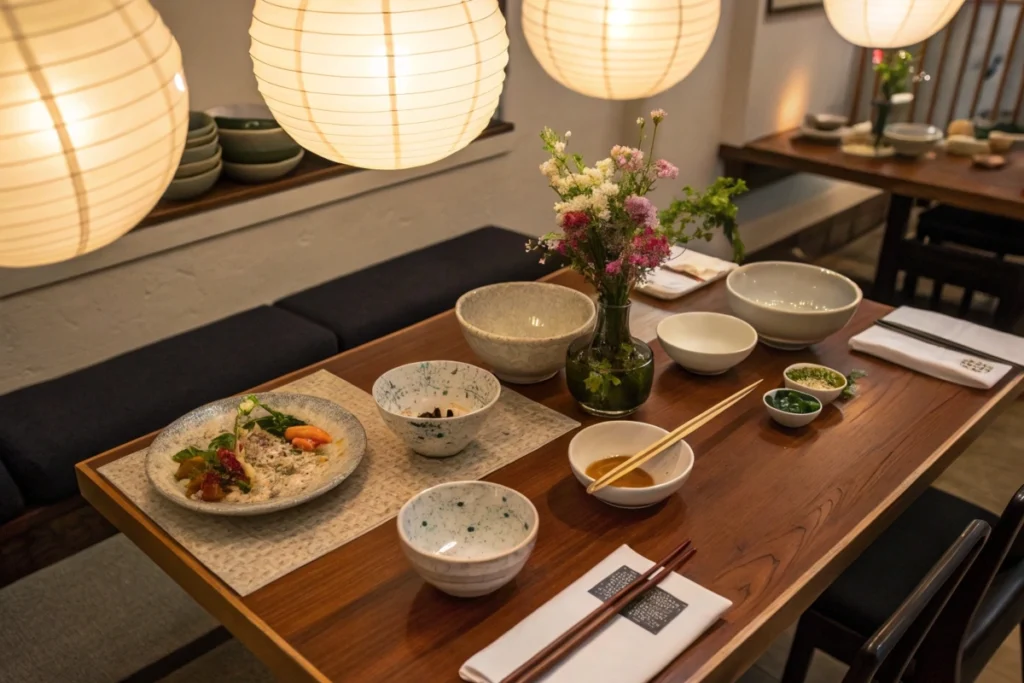Introduction
Tucked away in Denver, Colorado, domo japanese country food restaurant menu has won the hearts of locals and tourists alike. Catering to those who crave hearty, home-style Japanese cuisine, Domo offers a glimpse into the rustic fare once common in rural Japan. Unlike sushi-focused spots, this eatery champions earthy flavors—think robust soups, stews, pickled vegetables, and comforting grilled items. Its serene garden setting and farmhouse-inspired décor elevate the dining experience, reflecting tradition rather than urban trends.
For anyone searching best japanese restaurant denver co, Domo consistently ranks high, praised for authenticity and a menu brimming with unique dishes you won’t easily find elsewhere. From miso-laden stews to donburi bowls loaded with farm-fresh vegetables, each plate aims to replicate the warmth and nourishment of countryside cooking. The “country” descriptor extends beyond menu items—it’s woven into the environment, from communal seating to decorative antiques, further immersing diners in Japan’s rural ambiance.
If you’re also curious about gluten-free adaptations, fear not. Domo addresses dietary needs with certain accommodations, bridging tradition with modern culinary awareness—an approach reminiscent of gluten free tokyo efforts. Ready to explore domo japanese country food restaurant menu in detail? Let’s embark on an in-depth journey covering the star dishes, background, and practical tips to ensure you enjoy everything Domo has to offer. For additional culinary inspiration, see our japanese-new-year-recipes for celebratory ideas you can adapt year-round.
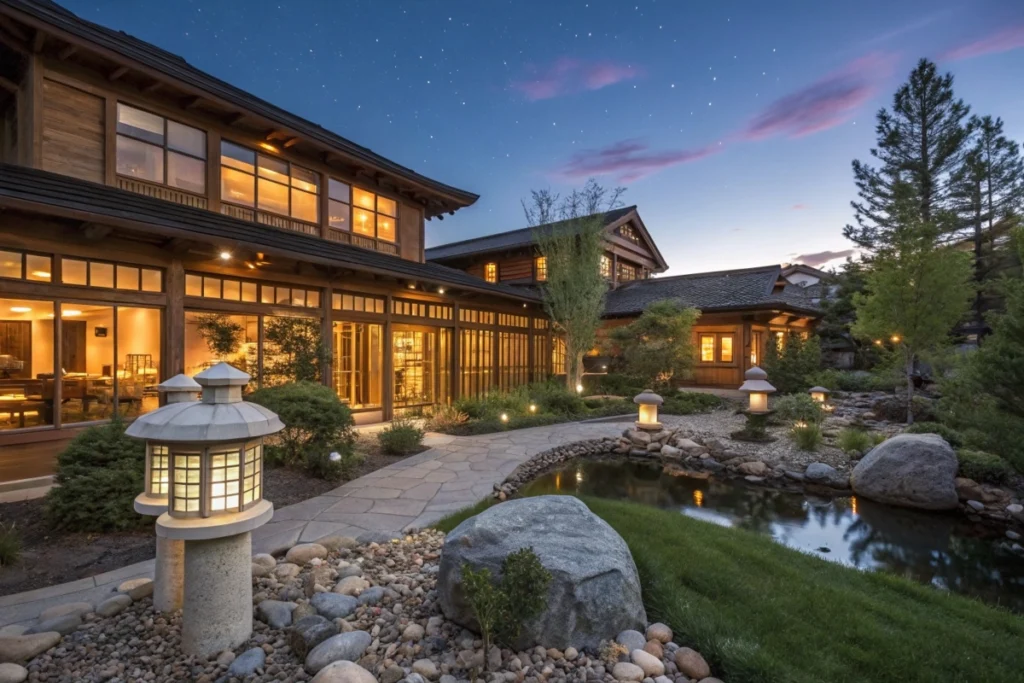
1. Domo: A Taste of Japanese Countryside Cuisine
Embracing Hearty, Homestyle Flavors
What sets Domo apart from standard Japanese eateries is its unwavering dedication to “country-style” cooking. This approach harks back to mountain villages and farm communities where meals revolve around local produce, miso-based broths, and slow-simmered stews. At Domo, you’ll see this reflected in robust soups bursting with vegetables and proteins—ideal for colder Denver evenings.
Atmosphere: More Than Just Food
Stepping into Domo feels like entering a rural Japanese farmhouse. Wooden accents, exposed beams, and earthy décor transport you to a simpler era. The layout often features communal tables, fostering an inclusive environment reminiscent of village gatherings in Japan’s highlands. Patrons can also dine amid a meticulously curated rock garden, bridging natural beauty with gastronomic delight.
Signature Countryside Dishes
- Nabemono Hot Pots: Traditional clay-pot stews loaded with fish, tofu, and vegetables in a savory broth. Perfect for group sharing.
- Donburi: Rice bowls topped with marinated meats, veggies, or fish. Some combos at Domo might spotlight seasonal ingredients for an authentic “farm to table” vibe.
- Pickled & Fermented Sides: Expect homemade tsukemono (pickled veggies) or small side dishes reminiscent of farm kitchens that waste little and celebrate the harvest.
Relevance to Denver’s Dining Scene
In a city brimming with trendy sushi bars, ramen joints, and fusion concepts, Domo’s emphasis on “countryside cooking” stands out. While domo denver menu indeed offers sushi or sashimi occasionally, the real star lies in hearty one-pot meals and fish stews. This niche resonates with diners seeking comfort or curious about lesser-explored facets of Japanese tradition.
Culinary Philosophy
Domo’s philosophy underscores respecting each ingredient’s natural flavor. Chefs typically rely on simmering, braising, and minimal frying to preserve freshness. Miso, soy sauce, and seasonal produce combine to form nourishing meals aligned with “washoku” principles, recognized by UNESCO for cultural significance. If you’d like to experiment with similar braised dishes at home, check out our authentic-japanese-barbecue-sauce-chicken-recipe-easy-delicious for a marinade that, while not identical, captures the spirit of slow-cooked savory goodness.
Healthy Indulgence
Another plus: Many of Domo’s staples revolve around vegetable-forward plates or lean proteins, making them naturally healthy. The use of fermented sauces (miso, pickles) offers gut-friendly probiotics, aligning with contemporary wellness trends. For those scanning “best japanese restaurant denver co,” health considerations frequently top their list. Domo meets that demand by balancing comfort and nutrition.
Conclusion of Section
Understanding Domo’s identity as a countryside culinary haven sets the stage for deeper menu exploration. From simmering pots to soulful bowls, each dish anchors you in an older Japan few mainstream restaurants replicate. Next, we’ll dissect the domo japanese country food restaurant menu itself, highlighting top picks, hidden gems, and how to navigate potential dietary preferences.
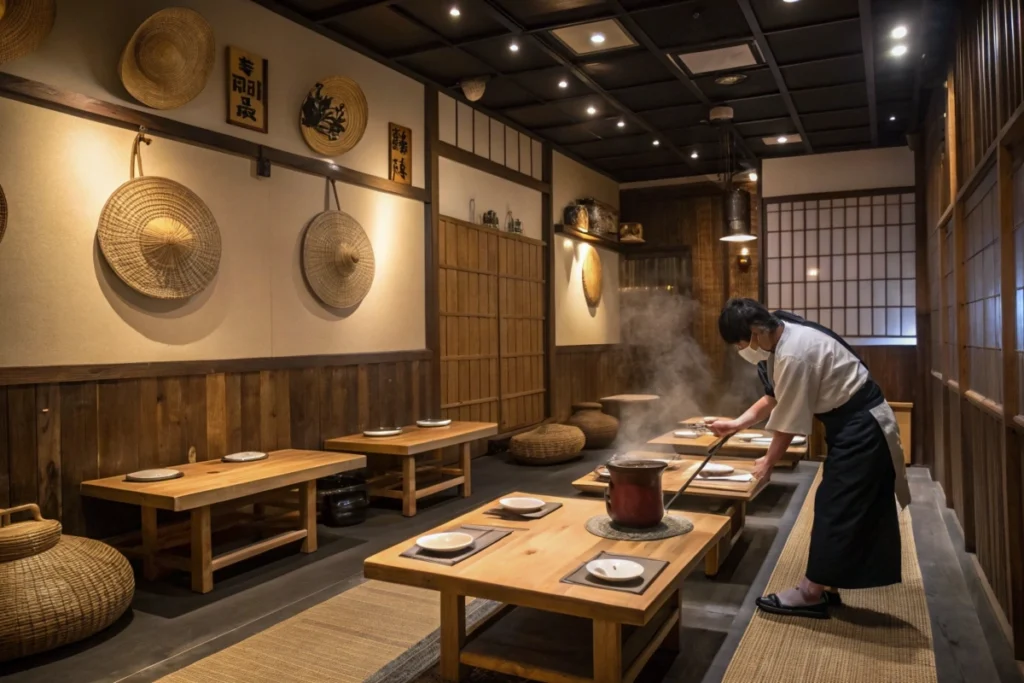
2. Decoding the Domo Japanese Country Food Restaurant Menu
Menu Structure: Traditional Meets Modern
At first glance, domo japanese country food restaurant menu can feel extensive. Items range from appetizers like pickled vegetables or seaweed salads to robust main courses. Yet, the underlying organization is straightforward—delve into soups, stews, grilled items, and donburi bowls. Sides and smaller plates revolve around in-season produce, giving you a snapshot of the farm-based ethos.
Highlight Dishes
- Nabeyaki Udon: Chewy udon noodles simmered with vegetables, chicken, and sometimes an egg. Cooked in a clay pot for a thick, comforting broth.
- Teishoku Sets: A “set meal” concept featuring a main dish (like grilled fish or tonkatsu), served alongside pickles, miso soup, and rice. This approach fosters a balanced, complete experience.
- Robata Grill Specials: Rustic, charcoal-grilled skewers of chicken, fish, or veggies. Lightly seasoned with salt or tare sauce.
- Fermented Veggie Plates: Various house-pickled or fermented items, highlighting each season’s bounty.
Seasonal Rotations
Because the “country style” is intimately connected with agricultural cycles, expect menu updates based on what’s fresh. Autumn might bring sweet potatoes or mushrooms, while spring features tender bamboo shoots or fresh greens. Summer highlights cold noodles, refreshing salads, and more grilled fish.
Unique Flavor Accents
- Miso Varieties: Different miso bases (red, white, or blended) underpin soups or marinades, each delivering unique depth.
- Mountain Vegetables (Sansai): Edible wild plants, such as fiddlehead ferns or warabi, foraged seasonally. Their earthy taste emphasizes “country cuisine.”
- Rice & Grain Options: Typically short-grain Japanese rice. Some dishes incorporate genmai (brown rice) or multi-grain blends.
Portion Sizes & Presentation
Unlike minimalist plating common in city sushi bars, domo restaurant embraces more generous bowls or hotpots. Expect steaming claypots or big earthenware bowls. The plating style resonates with a communal atmosphere—dessigned to evoke home-cooked comfort rather than refined minimalism.
Finding Gluten-Free or Dietary-Friendly Choices
While some items contain wheat-based sauces or battered foods, Domo often accommodates requests. They may substitute tamari or skip certain marinade steps if you mention gluten sensitivity. This echoes the “gluten free tokyo approach” of adaptative culinary service. For more GF-friendly recipes you can try at home, see gluten-free-japanese-food to discover how soy sauce swaps or alternative flours can keep you safe without sacrificing flavor.
Conclusion of Section
Decoding the domo japanese country food restaurant menu reveals a tapestry of hearty dishes rooted in farmland cooking. By focusing on robust soups, grilled favorites, and fresh produce, Domo offers a refreshing break from sushi-dominated Japanese menus in Denver. Next, we’ll compare Domo’s approach to other local Japanese spots, showcasing how it competes or complements Denver’s culinary landscape.
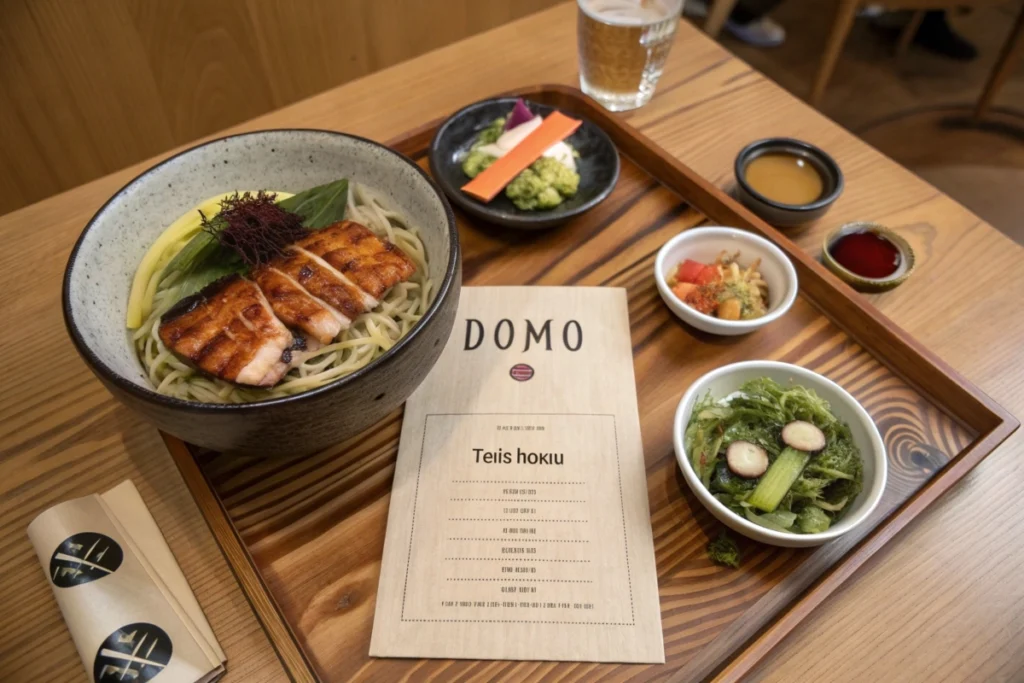
3. Denver’s Best Japanese Spots & How Domo Compares
A Thriving Japanese Food Scene
Denver’s culinary reputation has soared, boasting diverse international flavors. Among the best japanese restaurant denver co contenders are high-end sushi bars, ramen shops, and bento cafés. Places like Sushi Den or Izakaya Den corner the market on fresh fish and modern fusion. In this bustling environment, Domo stands out by rejecting mainstream sushi or izakaya trends in favor of countryside authenticity.
Contrasting Styles
- Sushi-Centric Restaurants: Crisp sashimi, chirashi bowls, and fusion rolls. Their atmosphere often exudes city chic. Domo, by contrast, rarely focuses on raw fish but invests heavily in slow-simmered, farm-based meals.
- Ramen & Street Food: Spots specializing in tonkotsu ramen, gyoza, and yakitori. Domo edges into that scene with hearty udon or soba, but its emphasis on thick, miso-laden stews sets it apart.
- Modern Izakayas: Trendy bars serving small plates, craft cocktails, and shareable bites. Domo, though it does have alcoholic beverages and communal vibes, centers on filling, homey plates instead of tapas-like bites.
Cultural Immersion
Part of Domo’s allure is its accompanying “mini museum” feel. Patrons discover old-world tools or artwork reminiscent of Japan’s countryside, forging an immersive experience. While other top-tier Denver establishments might present sleek décor or minimalistic vibes, Domo’s ambiance draws you into historical Japan. For visitors or expats craving that nostalgia, it’s a big selling point.
Price Points and Value
Domo’s range mostly fits mid-tier budgets. The portion sizes and dish complexity justify the cost, especially for comfort-seekers. Sushi restaurants with premium fish often top Domo’s price bracket, but those seeking a filling nabe or teishoku meal might find Domo more cost-effective and satisfying.
Dietary Support
While some trendy restaurants emphasize vegan or gluten-free menus, Domo’s accommodations are more subtle but present. If you have celiac or prefer a GF approach, mention it so servers can guide you. Similarly, vegetarians can enjoy tofu-based hotpots or veggie donburi. This approach resonates with the “country” ethos of adapting to local produce and needs. For instance, if you’re comparing other spots, see japanese-vegan-recipes for reference on how dishes can adapt to different diets.
Why Choose Domo?
If you crave a truly different Japanese meal in Denver—one that replicates rural traditions, fosters a communal feel, and showcases simmered, grilled, or pickled specialties—Domo is your pick. With a cozy garden setting, an emphasis on meaty stews and hearty soups, and an unwavering devotion to authenticity, it transcends the typical “Japanese restaurant” classification. From the domo denver menu to its countryside aesthetic, everything works in unison to deliver an enriching cultural experience that sets it apart in Denver’s competitive market.
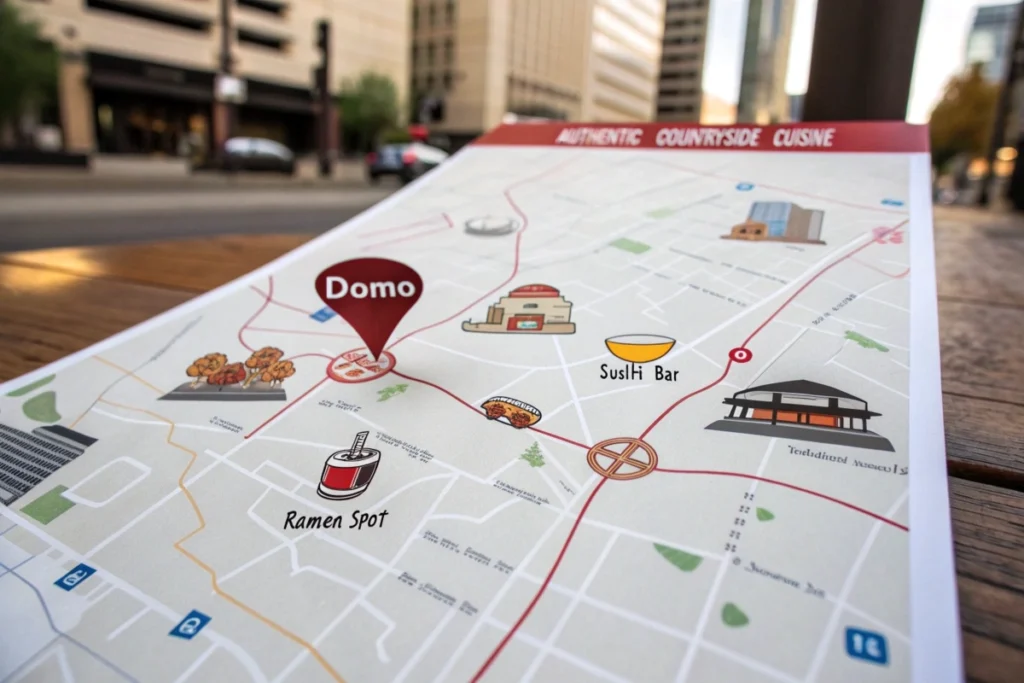
4. Gluten-Free and Dietary Considerations at Domo
Navigating a Wheat-Heavy Cuisine
Japanese food often incorporates wheat via noodles, soy sauce, and breaded items. Does that spell doom for celiac diners at Domo? Not necessarily. The domo restaurant staff typically understands these challenges and offers modifications. By alerting them to your restrictions, you’ll minimize cross-contamination.
Gluten-Free Substitutions
- Tamari vs. Soy Sauce: Ask if they stock tamari or wheat-free soy sauce for any sauce-laden dish.
- Rice over Noodles: If a soup typically features wheat-based udon, they might swap for plain rice or gluten-free noodles if available.
- Non-Breaded Proteins: Domo’s grilled fish or chicken often avoids wheat-based marinades. Confirm the marinade or sauce used.
- Avoiding Hidden Wheat: Tempura or certain pickles might have gluten. Double-check with staff who can steer you toward safe picks.
Cross-Contamination Insights
While Domo maintains an open, country kitchen style, it’s not a dedicated GF facility. Cross-contamination might occur if they use the same fryer or cutting boards for wheat items. Communicating with your server or chef about celiac-level severity is crucial. For tips on how to replicate safe sauces at home, see japanese-barbecue-sauce-recipes for marinade ideas that can be made fully GF with tamari or GF miso.
Hibachi Considerations
Curious is hibachi gluten free at Domo or similar establishments? The open griddle cooking might risk wheat-based sauces swirling around. If Domo hosts a hibachi-style service (less likely, but some items might share grills), ask for separate utensils or pre-wiped surfaces. Alternatively, choose items that are steamed, simmered, or grilled in the kitchen away from public teppan.
Vegetarian and Other Diets
Vegetarians can opt for tofu-based soups or vegetable-laden plates. Some stews might include fish stock, so confirm if the broth is purely vegetable. Meanwhile, vegans should watch for dashi made with bonito flakes. The concept of “country cuisine” easily adapts to produce-heavy meals, so with minor modifications, Domo can accommodate broader diets.
Traveler Tip
If you’re visiting Denver and also plan to go to Japan, mastering Domo’s approach to GF ordering can prepare you for gluten free tokyo experiences. The staff’s knowledge might help you learn certain Japanese phrases or key pointers on how to request tamari or confirm no wheat flour in your dish—vital for exploring tokyo gluten free restaurants later.
Conclusion for Dietary Section
Domo’s readiness to adapt a few menu items for gluten-free diners or vegetarians affirms its inclusive spirit. By focusing on hearty, sauce-based dishes, the restaurant has learned to tweak recipes to suit modern dietary demands while retaining that “village cooking” essence. Next, we’ll highlight specific must-try items from the domo japanese country food restaurant menu and practical pointers for an unforgettable meal.
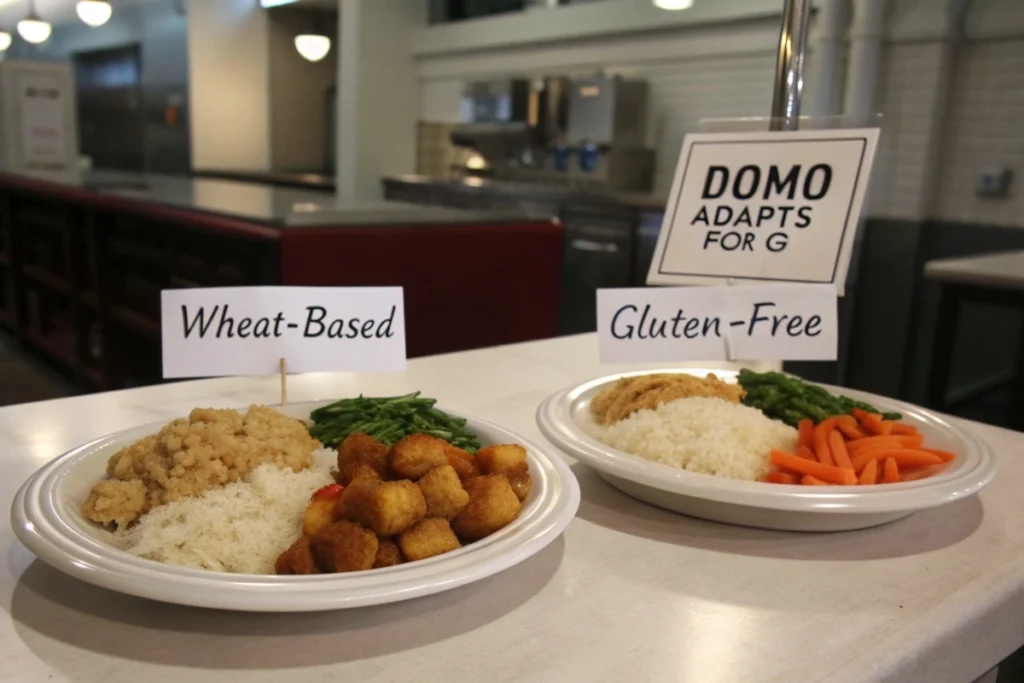
5. Must-Try Dishes, Tips, and Cultural Insights
Top Menu Picks
- Yosenabe (Hot Pot): A medley of meat, seafood, tofu, and vegetables simmered in a light broth. Perfect for cold days.
- Country-Style Miso Soup: Heartier than standard miso soup, loaded with root vegetables, mushrooms, and thick miso paste.
- Miso-Glazed Fish: Commonly uses salmon or cod, marinated in sweet-savory miso for a caramelized finish under the grill.
- Pickled Sides (Oshinko): Tangy vegetables offering brightness against more savory main dishes.
Enhancing Your Experience
- Timing: Domo can get crowded on weekends. Arrive early or make reservations if possible, especially for larger groups.
- Garden Seating: If weather permits, request an outdoor seat. The quiet garden fosters an old-world aura—rare in an urban setting.
- Engage with Staff: Servers might share the story behind certain dishes or pickled sides. This is a chance to learn rural Japanese cooking lore.
Cultural Etiquette
While Domo is in Denver, it respects many Japanese dining customs. If you see a communal sauce station or pickled side bar, use the provided utensils, and be mindful not to double-dip. Slurping is acceptable in Japanese culture, indicating enjoyment (especially with hot noodles or soups), though American diners might be less accustomed.
Adapting to Tastes
If you’re new to country-style dishes, be aware some flavors might be more pungent or fermented than typical American-friendly sushi rolls. But that’s the charm—earthy notes from miso, occasional bitterness from mountain vegetables, or the tang of pickles. For a smoother start, try lighter items like robata-grilled fish or simpler stews first. If you crave more adventurous flavors, see how vegetables-japanese-recipe incorporates different pickling methods, offering additional ideas.
Pairing Drinks
Japanese sake, beer, and tea often pair well with hearty dishes. Domo might feature a curated sake list, ranging from dry to sweet. Alternatively, barley tea or green tea cleanses the palate between bites.
Take-Home Inspiration
Once you relish Domo’s offerings, consider replicating these rustic vibes at home. Try slow-cooking stews with a heavier miso base or incorporate more pickled sides into everyday meals. Our traditional-japanese-desserts-recipe extends the experience to sweet endings that complement savory dishes. Being inspired by Domo’s approach could shift your entire view on Japanese cooking, prioritizing warmth and nourishment over the commonly spotlighted sushi or ramen.
Conclusion of Must-Try Section
By sampling a variety of soups, grilled specials, and side dishes, you’ll fully grasp Domo’s mission to preserve and share rural Japanese culinary heritage. The next part of our article delves into the restaurant’s backstory, exploring how it ended up a cornerstone of Denver’s Japanese dining scene—plus global comparisons to similar “country cooking” concepts in Japan.
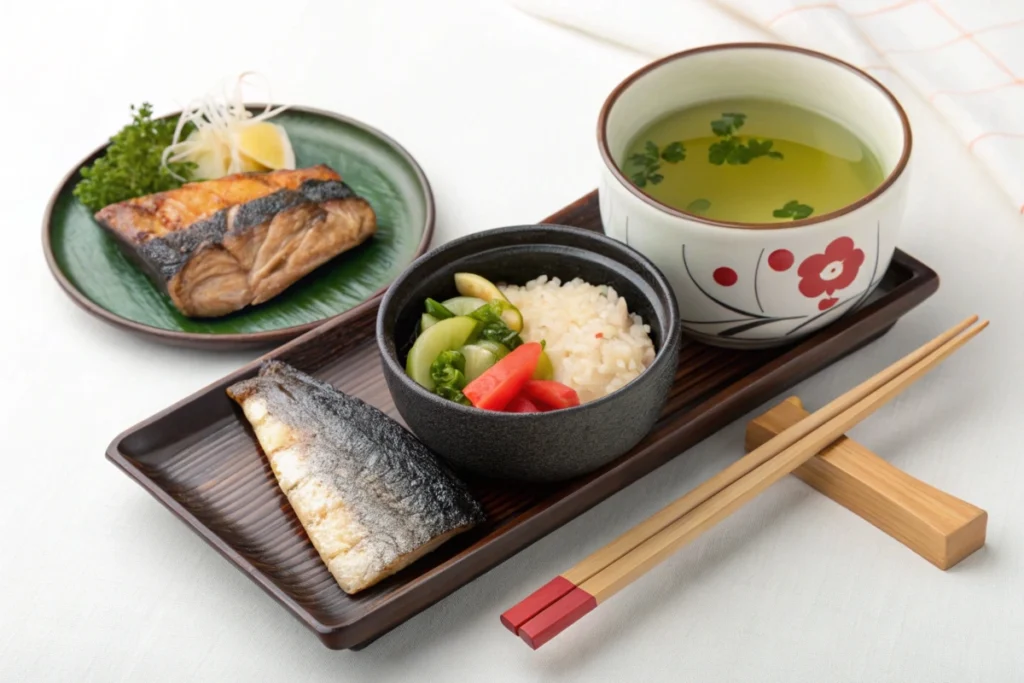
History and Context
Domo’s Origin Story
Though Domo sits in the heart of Denver, its conception stems from the founder’s childhood experiences in rural Japan—surrounded by communal meals, fresh produce, and simple cooking. This background heavily influences the domo japanese country food restaurant menu, championing nourishment and tradition over modern flash. Initially starting as a modest eatery, word-of-mouth about “authentic country food” soon drew local Japanese expats, curious travelers, and adventurous foodies.
Country Cuisine in Japan
In Japan, “countryside food” or inaka ryori has historically emphasized local produce, miso, pickles, and grilled fish or meat. The Meiji Restoration introduced Western influences, but many small towns preserved older cooking methods—braising in clay pots, fermenting seasonal veggies, and stretching rations in communal stews. This style of cooking eventually found renewed interest among urbanites seeking “nostalgic, hearty meals.”
Transition to the U.S.
By the 1960s and 70s, Japanese restaurants in America often fixated on sushi and tempura to lure new diners. As more Americans discovered beyond these staples, a niche opened for specialized concepts. Domo capitalized on this shift, focusing on lesser-known “home-cooked” items—thick miso soups, mountain vegetables, and hotpots. Denver’s climate even parallels certain mountainous Japanese regions, making stews and soups particularly comforting in winter.
Modern Evolutions
While Domo’s core remains faithful to old-world authenticity, it adapts slightly for American palates. Certain dishes might incorporate local Colorado produce or experiment with reduced salt to align with modern health considerations. The restaurant acknowledges dietary shifts too, introducing gluten-free or vegetarian tweaks to classic recipes. This flexible spirit ensures Domo stays relevant without losing its identity.
Wider Cultural Impact
Domo isn’t alone in championing “country cooking.” Across the U.S., pockets of domo denver–like* restaurants arise, offering a reprieve from sushi-ramen monotony. Some hail from immigrants seeking to preserve family recipes; others are entrepreneurial chefs exploring Japan’s regional cuisines. Nonetheless, Domo’s consistent acclaim cements it as a pioneer in Denver. The combination of a peaceful garden, a small museum of rural artifacts, and delicious homestyle plates stands as a time capsule of rural Japan.
Comparisons Abroad
If you ever travel to Japan, look for “minka-style” restaurants in smaller towns. They reflect the same ideology: wooden farmhouse settings, communal vibe, and seasonal menus. Domo draws direct inspiration from these establishments, bridging continents through shared tradition. For dessert parallels, see how japanese-dessert-recipes can replicate the sweet closers you might find in a countryside household—like mochi or yokan, showcasing simpler, nostalgic treats.
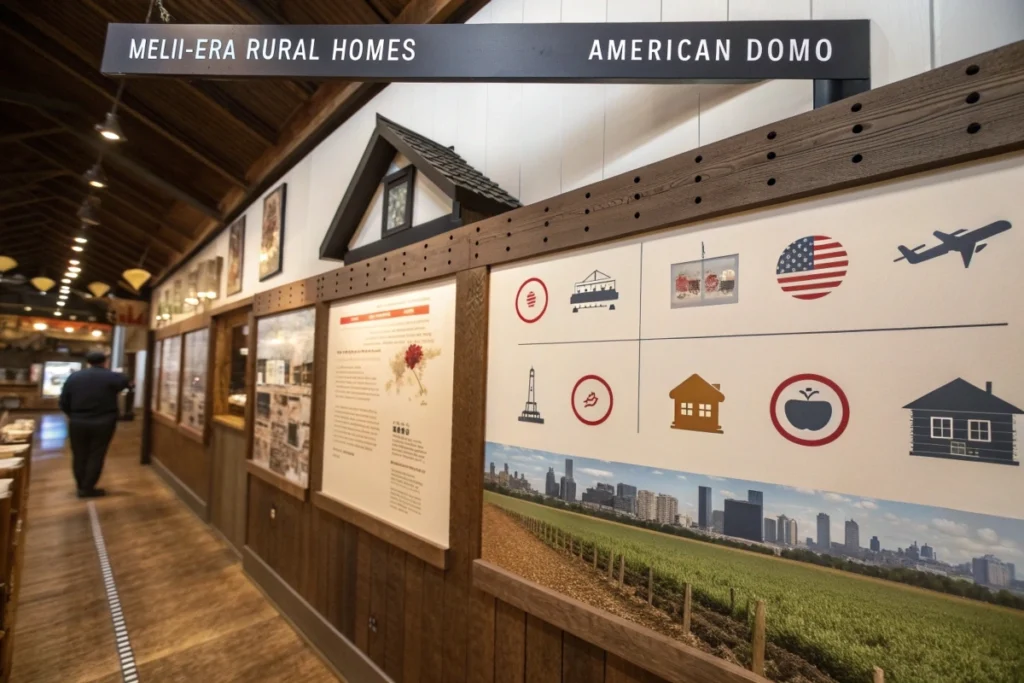
Practical Examples/Use Cases
1. Family Gathering with a Twist
Jake’s family typically meets in a standard American grill. But he suggests Domo for a more cultural outing. Over nabemono hot pots, grilled fish, and fresh miso soup, they bond over new flavors. Even his picky-eater niece appreciates the mildness of certain stews. This cross-generational acceptance exemplifies how Domo’s homestyle approach welcomes all comfort-food lovers.
2. Post-Ski Comfort Food
Denver locals returning from a day’s skiing in the Rockies crave hearty meals. Instead of typical chili or steak, they choose domo japanese country food restaurant menu for a soul-warming alternative: piping-hot miso stews, savory pickles, and a communal vibe that matches the camaraderie after winter sports. Replacing standard diner fare with Japanese country cooking becomes an instant tradition.
3. Date Night for Food Adventurers
Samantha and Leo, both foodie explorers, want something beyond sushi. They pick Domo, drawn by online reviews praising its authenticity. During dinner, they share an earthy mushroom hot pot, indulging in house-pickled vegetables and perfectly grilled yakimono. They end the night walking through the garden, enthralled by the marriage of nature and hearty cuisine—a conversation piece that cements a memorable date night. For a sweet finale, best-japanese-food resources point them to other iconic treats they might try next time.
4. Menu Inspiration for Home Chefs
Amateur chef Chris visits Domo, enthralled by robust flavors. He notes how miso transforms root veggies in a nabe. Determined to replicate it, he references steak-japanese-recipe marinade guidelines and merges them with a stew concept. The result: a homemade “countryside” stew drawing from Domo’s style but tailored to Chris’s spice preferences. This exemplifies how encountering Domo’s cuisine spurs creativity in home kitchens.
Conclusion of Examples
These scenarios spotlight Domo’s versatility: a family-friendly haven, a cozy post-ski refuge, a romantic date spot, and a wellspring of inspiration for budding cooks. Whether you gravitate to the communal stew pot or the grilled fish, Domo’s country flair resonates with diverse lifestyles—a testament to how thorough the “countryside cooking” concept can adapt and delight. Next, let’s finalize with some frequently asked questions about Domo, ensuring you’re fully prepared to savor this unique Denver gem.
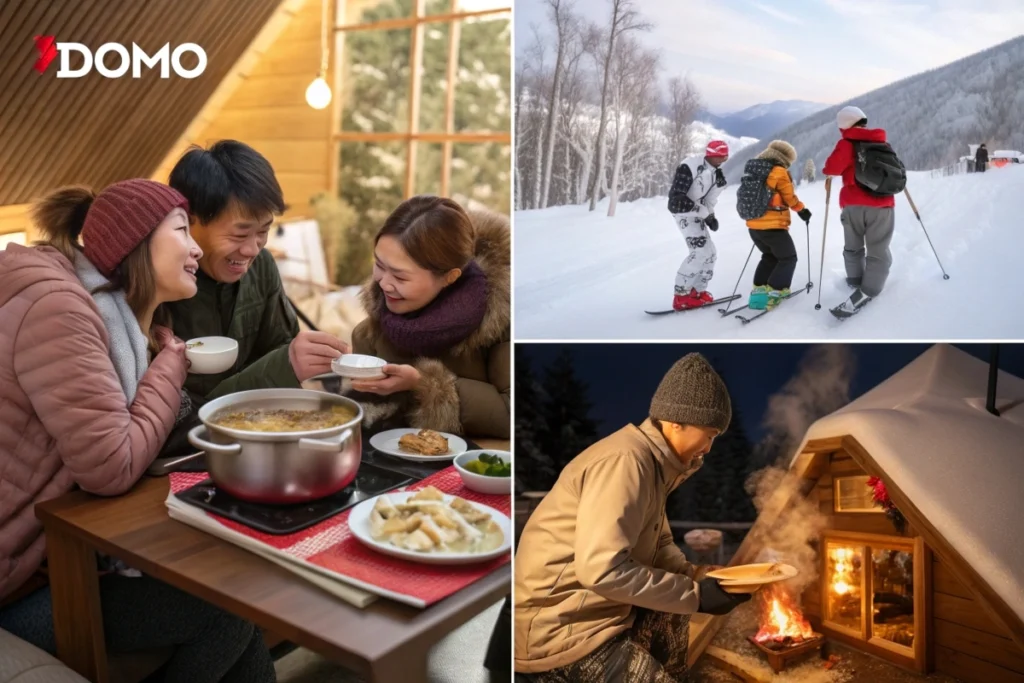
FAQs
1. What is Domo Japanese Country Food Restaurant?
Domo is a Denver-based eatery focusing on rural-style Japanese cuisine. Its menu highlights comforting soups, grilled fish, and pickled vegetables, all set in a rustic ambiance reminiscent of old Japanese farmhouses. Visitors appreciate its authenticity and garden setting.
2. Does Domo serve sushi or modern Japanese fare?
While some sushi items might appear occasionally, the domo menu denver primarily showcases country cooking—think hearty miso broths, mountain vegetables, and more. The experience revolves around traditional homestyle dishes rather than city-based sushi or izakaya specialties.
3. Are there gluten-free options at Domo?
Yes, certain menu items can adapt to GF needs by substituting wheat-based soy sauce with tamari, or skipping flour in soups. Always inform staff of celiac-level concerns. For more insights, read gluten-free-japanese-food to understand how classic Japanese dishes can become GF-friendly.
4. What’s unique about the “country food” approach?
Unlike mainstream Japanese eateries focusing on sashimi or ramen, Domo’s cuisine embodies the simpler fare of rural Japanese families. Think slow-cooked stews, robust one-pot dishes, and seasonal produce. The result is a heartwarming dining experience that differs significantly from typical sushi bars.
5. Is Domo family-friendly or date-friendly?
Both! Families appreciate large portion sizes and communal seating. Couples enjoy the intimate garden, cultural décor, and comforting dishes ideal for a cozy date. The staff accommodates many requests, from kid-friendly plates to quiet corners for two.
6. What about reservations or wait times?
Given Domo’s popularity among locals and tourists, weekend or evening waits can be long. Booking ahead or arriving early helps secure a spot, especially for groups. However, off-peak hours often mean quicker seating and a more relaxed experience.
7. Where can I find more Japanese comfort recipes like Domo’s?
Check out noodles-japanese-pan-noodles-recipe for a homemade approach to hearty noodles. Similarly, japanese-chicken-fried-rice-recipe- offers another comforting dish easily customizable to your taste.
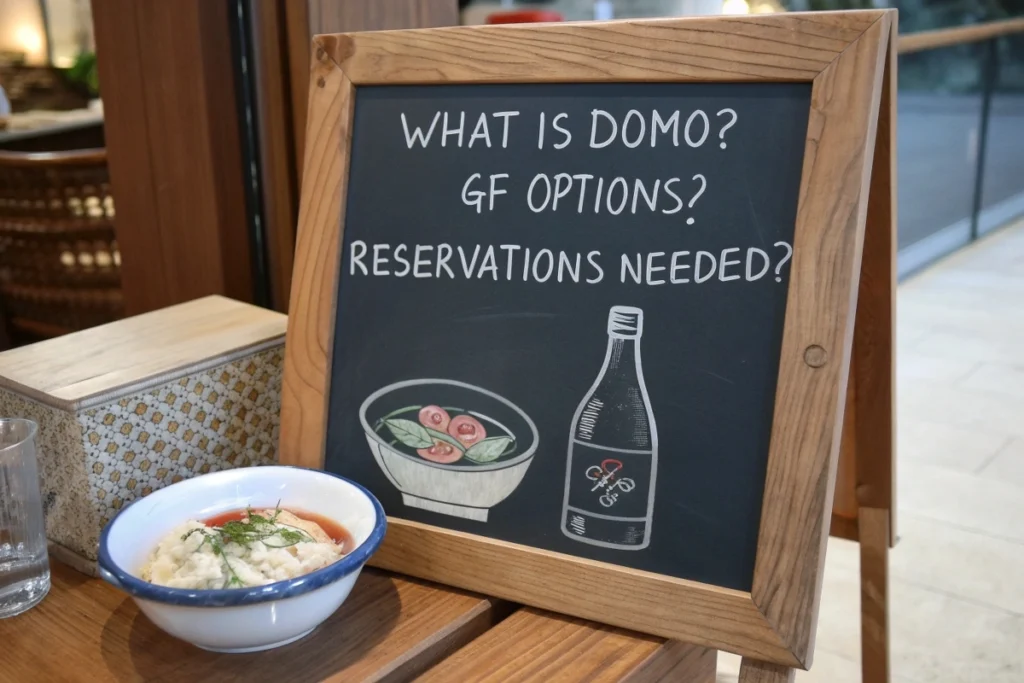
Conclusion
Exploring domo japanese country food restaurant menu reveals a unique facet of Japanese cuisine rarely spotlighted in American cities. By focusing on hearty soups, stews, fermented sides, and a welcoming farmhouse aesthetic, Domo delivers a comforting taste of rural Japan right in Denver’s urban sprawl. Whether you’re a local or a visitor, the garden seating, curated artifacts, and flavorful dishes immerse you in a cultural escapade beyond mere dinner.
From the robust nabemono hot pots to the tender grilled fish and pickled vegetables, each menu item underscores Domo’s commitment to tradition. At the same time, the restaurant remains flexible—offering gluten-free options and mindful dietary tweaks, reflecting modern culinary awareness. To further explore such hearty Japanese dishes at home, see easy-japanese-recipes for an approachable lineup of quick meals.
Ultimately, Domo stands as more than just a place to eat. It’s a glimpse into Japan’s agrarian heart, celebrating communal feasting and unpretentious comfort. Make a reservation, try the stews, soak in the garden ambiance, and join the many diners who’ve discovered that “countryside cooking” can be as captivating as any trendy sushi roll or ramen bowl. Let Domo’s authenticity guide you to new flavors and cultural insights that linger well beyond your last spoonful.
